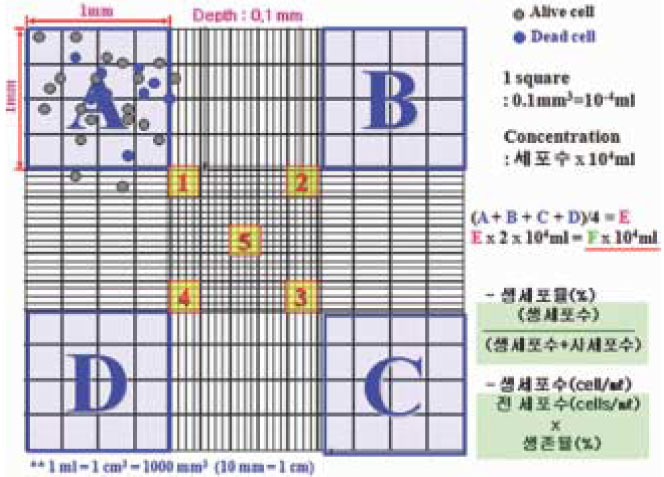References
1. Kim JW, Kim US, Kim J, Lee SJ. Evaluation of Periodontal Ligament Cell Viability in Rat Teeth after Frozen Preservation using in-vivo MTT Assay. J Korean Acad Conserv Dent 2006. 31192–202.
2. Mazur P. Freezing of living cells: mechanisms and implications. Am J Physiol 1984. 247C125–C142.
3. Farrant J. Water transport and cell survival in cryobiological procedures. Philos Trans R Soc Lond B Biol Sci 1977. 278(959)191–205.
4. Fujikawa S. "Freeze-fracture and etching studies on membrane damage on human erythrocytes caused by formation of intracellular ice.". Cryobiology 1980. 17(4)351–362.
5. Diller KR, Cravalho EG. A cryomicroscope for the study of freezing and thawing processes in biological cells. Cryobiology 1970. 7(4)191–199.
6. Kawata T. Tooth transplantation by teeth bank-approach to human-Hiroshima 2005. Department of Orthodontics, Hiroshima University School of Dentistry;
7. Ahn HJ, Kim US, Kim J, Kim DW, Kim KY, Lee CY, Lee SJ. Evaluation of the Viability of Periodontal Ligament Cell in Rat Teeth using Slow Cryopreservation Method with Magnetic Field. J Korean Acad Conserv Dent 2008. 33332–340.
8. Pribenszky C, Molnar M, Cseh S, Solti L. Improving post-thaw survival of cryopreserved mouse blastocysts by hydrostatic pressure challenge. Anim Reprod Sci 2005. 87(1-2)143–150.
9. Pribenszky C, Molnar M, Ulrich P, et al. Pressure assisted cryopreservation. Reprod Domest Anim 2005. 40228–344.
10. Kuo YH, Pribenszky Cs, Huang SY. Higher litter size is achieved by the insemination of high hydrostatic pressure-treated frozen-thawed boar semen. Theriogenology 2008. 701395–1396.
11. Berridge MV, Tan AS, McCoy KD, Wang R. The biochemical and cellular basis of cell proliferation assays that use tetrazolium salts. Biochemica (Indianapolis) 1996. 415–20.
12. Alotto D, Ariotti S, Graziano S, Verrua R, Stella M, Magliacani G, Castagnoli C. The role of quality control in a skin bank: tissue viability determination. Cell Tissue Bank 2002. 3(1)3–10.
13. Czochrowska EM, Stenvik A, et al. "Outcome of tooth transplantation: survival and success rates 17-41 years posttreatment.". Am J Orthod Dentofacial Orthop 2002. 121(2)110–119.
quiz 193.
14. Jonsson T, Sigurdsson TJ. "Autotransplantation of premolars to premolar sites. A long-term follow-up study of 40 consecutive patients.". Am J Orthod Dentofacial Orthop 2004. 125(6)668–675.
15. Mazur P. "Equilibrium, quasi-equilibrium, and non-equilibrium freezing of mammalian embryos.". Cell Biophys 1990. 17(1)53–92.
16. Mazur P, Leibo SP, Chu EH. A two-factor hypothesis of freezing injury. Evidence from Chinese hamster tissue-culture cells. Exp Cell Res 1972. 71(2)345–355.
17. Rapatz G, Sullivan JJ, et al. "Preservation of erythrocytes in blood containing various cryoprotective agents, frozen at various rates and brought to a given final temperature.". Cryobiology 1968. 5(1)18–25.
18. Thorpe PE, Knight SC, et al. "Optimal conditions for the preservation of mouse lymph node cells in liquid nitrogen using cooling rate techniques.". Cryobiology 1976. 13(2)126–133.
19. Leibo SP, McGrath JJ, et al. "Microscopic observation of intracellular ice formation in unfertilized mouse ova as a function of cooling rate.". Cryobiology 1978. 15(3)257–271.
20. Abe F, Kato C, Horikoshi K. Pressure regulated metabolism in microorganisms. Trends Microbiol 1999. 7(11)447–453.
21. Aldridge BE, Bruner LJ. Pressure effects on mechanisms of charge transport across bilayer membranes. Biochem Biophys Acta 1985. 817(2)343–354.
22. Huang SY, Pribenszky C, Kuo YH, et al. The effect of hydrostatic pressure treatment on the protein profile of boar spermatozoa before and after freezing. Theriogenology 2008. 701391.
23. Parsell DA, Lindquist S. The function of heat shock proteins in stress tolerance: degradation and reactivation of damaged proteins. Ann Rev Genet 1993. 27437–496.
24. Pelham HR. Heat shock proteins: coming in from cold. Nature 1988. 332776–777.
25. Du Y, Lin L, Schmidt M, Bogh IB, Kragh PM, Sorensen CB, Li J, Purup S, Pribenszky C, Molnar M, Kuwayama M, Zhang X, Yang H, Bolund L, Vajta G. High hydrostatic pressure treatment of porcine oocytes before handmade cloning improves developmental competence and cryosurvival. Cloning Stem Cells 2008. 10(3)325–330.
26. Lee YE, Kim US, Kim J, Han SH, Lee SJ. The Efficacy of Programmed Cryo-preservation under Pressure in Rat Periodontal Ligament Cells. J Korean Acad Conserv Dent 2009. 34356–363.








